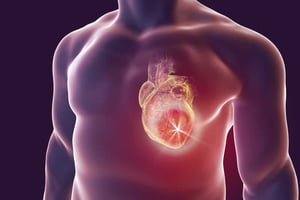According to World Health Organization data, 23 million people worldwide suffer from a heart attack every year. Approximately 30% do not survive (the percentage is highest in countries without advanced healthcare systems), whereas the remaining 70% manage to overcome this dangerous state thanks to invasive or pharmacological therapies that help to tackle the most intense stages, but not always definitively. The heart, in fact, forms a scar in the areas where the muscle cells are damaged or destroyed due to the lack of blood (caused by a slight or serious “blocking” of the coronary arteries: this is a heart attack), and this scar tissue is permanent. Therefore, the heart no longer works to the best of its ability (much of which depends, of course, on the seriousness of the heart attack). Now, however, a study published in the scientific journal Nature and conducted by researchers from King’s College London has given hope for the future.
The researchers in fact demonstrated – for the moment on large animals (pigs) – that the introduction of a small piece of genetic material called microRNA-199 to the heart stimulates the regeneration of the heart tissue. One month later – report the researchers in Nature – the hearts of the pigs that underwent this therapy recovered lost cardiac function.
After years of failed attempts with stem cells, the solution could therefore be found in these tiny fragments of RNA, which have already demonstrated their ability in other studies to significantly stimulate the creation of new myocytes (heart muscle cells). RNA, it is to be noted, together with DNA, forms a part of the complex system that contains the “life project” of cells and the instructions for implementing this project. In brief, it can be said that RNA “translates” the instructions contained in DNA and plays a key role in protein synthesis.
Micro RNA-199 is administered through viruses that have been specially modified and attenuated to reach the heart (without creating any damage to along the way). The technique, however, is still to be improved, admit the researchers, because the fragments of genetic code have been found to be too powerful: if not stopped, they continue to stimulate the formation of new myocytes, and this can cause dangerous arrhythmias. Therefore, a large number of studies will still be required before being able to test microRNA-199 on humans. However, the premises offer hope that this could truly become an innovative therapy to treat heart attacks in the future.

